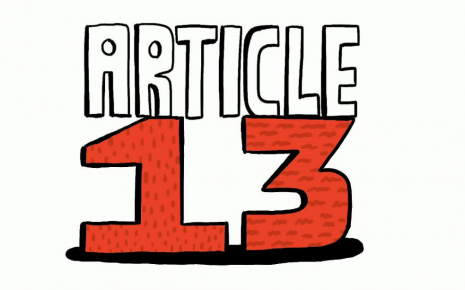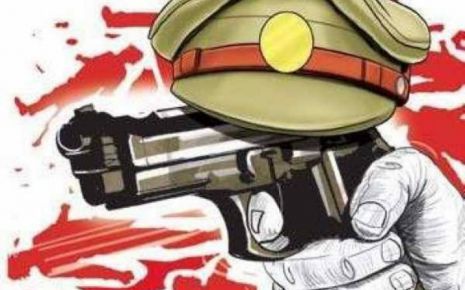Injuries Leading To Non-Bailable Offenses
When certain severe offenses, like attempted murder (307 IPC) resulting in
injury or grievous harm with dangerous means or weapons are involved, or if the
injury is caused by acid attack, the offense becomes non-bailable under the law.
In these instances, the gravity of the crime and the potential danger to the
victim's life or well-being necessitate the accused person's detention without
the option of immediate bail. This will be considered a non-bailable offense
according to Section 326 IPC. The non-bailable nature of these offenses is
designed to safeguard the victim and hinder the accused from potentially
inflicting further harm or evading justice.
In India, the law distinguishes between bailable and non-bailable offenses, with non-bailable offenses typically involving more serious crimes that carry heavier penalties and stricter procedural safeguards. One factor that may render a crime non-bailable, particularly in cases involving injuries, is the causation of grievous hurt or bodily harm by any dangerous weapon or instrument.
Grievous hurt, as defined under Section 320 of the Indian Penal Code (IPC), includes injuries that endanger life, cause permanent disfigurement, impair hearing or sight, or result in severe bodily pain. Offenses resulting in grievous hurt are generally considered more severe and may lead to non-bailable charges.
Section 320 of the Indian Penal Code delineates the specific forms of harm classified as "grievous." These include:
Under Section 326B of the Indian Penal Code (IPC), the crime includes willfully throwing or trying to throw acid on an individual, attempting to administer acid to a person, or employing other means to inflict permanent or temporary harm, disfigurement, burns, maiming, disability, or grievous injury upon them. The penalty for this offense ranges from five to seven years in prison, in addition to a monetary fine.
It is important to emphasize that 'acid' encompasses any substance with acidic or corrosive qualities that can cause physical damage resulting in scarring, disfigurement, or disability. Furthermore, 'permanent or partial damage or deformity' does not necessarily need to be irreversible for this section to apply. This offense is categorized as cognizable and non-bailable. It is adjudicated by the Court of Session and cannot be compromised under Section 320 of the Code of Criminal Procedure (CrPC), 1973.
However, grievous injuries as defined in Sections 325 IPC and 335 IPC are bailable.
An attempt to murder that causes any injury to the intended victim, regardless of its severity, renders the offense non-bailable. The inherent gravity of attempting to take a life elevates the offense to a non-bailable category, even if the resulting injury is not significant. The law treats all attempts to murder with the utmost seriousness, irrespective of the extent of the inflicted injury. The non-bailable nature of attempted murder emphasizes the severity with which the law regards such offenses. Any injury sustained during an attempted murder, no matter how minor, results in the offense being classified as non-bailable.
The severity of the injury inflicted plays a crucial role in determining whether an offense is bailable or non-bailable. Crimes causing grievous hurt often involve intentional acts or negligence resulting in significant physical harm to the victim. Such injuries can have long-lasting consequences, both physically and psychologically, and therefore necessitate stringent legal measures to ensure justice for the victim and deterrence against similar offenses in the future.
The severity of the injury is assessed based on various factors, including the nature of the injury, its impact on the victim's health and well-being, and the intent or negligence of the perpetrator. For instance, causing fractures, burns, or internal injuries may constitute grievous hurt, depending on the extent of the harm inflicted.
In cases where injuries result from criminal acts such as assault, battery, or reckless driving, the culpability of the accused is closely scrutinized. In cases where the injuries are considered severe, the offense may be classified as non-bailable, preventing the accused from being granted bail immediately after arrest or surrender. This decision is made based on the gravity of the charges and the potential threat to public safety.
The medical report crafted by a physician serves as a pivotal element in determining if an injury is categorized as minor or severe. This distinction bears weighty legal significance, influencing the severity of accusations, potential punishments, and the ultimate resolution of legal processes. Firstly, the injury report constitutes a cornerstone of evidence in legal disputes concerning physical harm. It meticulously records the injury, describing its nature, magnitude, and possible long-term effects. This documentation is paramount in establishing the circumstances surrounding the injury and guaranteeing an impartial and precise evaluation of its severity.
Secondly, medical professionals possess specialized knowledge in diagnosing and evaluating injuries. Their assessment relies on medical understanding, clinical examinations, and sometimes diagnostic tools like X-rays or scans. Thus, their opinion carries substantial weight in legal proceedings, as it is grounded in objective medical criteria and professional judgment. Moreover, the injury report functions as a critical reference for legal practitioners, including prosecutors, defense lawyers, judges, and juries. It furnishes invaluable insights into the medical facets of the case, aiding in comprehending the nature and severity of the injury and guiding decisions on bail, charges, plea agreements, and sentencing.
The length of a victim's hospital stay is a crucial factor in determining the severity of their injuries, which ultimately classifies the offense as simple or grievous and impacts the possibility of bail. Prolonged hospital stays, as for example of more than 20 days, usually indicate more severe injuries, suggesting grievous harm. Grievous injuries include those that result in fractures, disfigurement, permanent disability, or life-threatening conditions. In legal proceedings, the severity of the injuries influences bail decisions; offenses involving grievous injuries are frequently non-bailable due to their seriousness.
The duration of hospitalization serves as tangible proof of the extent of harm caused, providing courts with a clear indication of injury severity and aiding in appropriate legal measures against the perpetrator.
Additionally, the circumstances surrounding the commission of the offense may influence whether bail is granted. Factors such as the accused's criminal history, intention, the likelihood of absconding or tampering with evidence, and the impact of releasing the accused on the victim or society are considered by the court when deciding bail in non-bailable cases.
In summary, the causation of injuries resulting in grievous hurt by a dangerous instrument or weapon or acid attack is a significant factor that may make a crime non-bailable in India. The severity of the injury, the intent or negligence of the perpetrator, and the potential risk to public safety are critical considerations in determining bail eligibility and ensuring justice for the victim. By imposing stricter legal measures for offenses involving serious injuries, the Indian legal system seeks to uphold the rule of law, protect victims' rights, and deter future acts of violence or negligence.
In India, the law distinguishes between bailable and non-bailable offenses, with non-bailable offenses typically involving more serious crimes that carry heavier penalties and stricter procedural safeguards. One factor that may render a crime non-bailable, particularly in cases involving injuries, is the causation of grievous hurt or bodily harm by any dangerous weapon or instrument.
Grievous hurt, as defined under Section 320 of the Indian Penal Code (IPC), includes injuries that endanger life, cause permanent disfigurement, impair hearing or sight, or result in severe bodily pain. Offenses resulting in grievous hurt are generally considered more severe and may lead to non-bailable charges.
Section 320 of the Indian Penal Code delineates the specific forms of harm classified as "grievous." These include:
- Irreversible loss of sight in one or both eyes.
- Irreversible or permanent loss of hearing in one or both ears.
- Amputation or permanent loss of any limb or joint.
- Destruction or permanent impairment of the functionality of any limb or joint.
- Enduring deformation of the head or face.
- Fracture or dislocation of any bone or tooth.
- Any injury that jeopardizes life or results in the victim enduring severe bodily pain for a period of twenty days or renders them incapable of pursuing their usual activities.
Under Section 326B of the Indian Penal Code (IPC), the crime includes willfully throwing or trying to throw acid on an individual, attempting to administer acid to a person, or employing other means to inflict permanent or temporary harm, disfigurement, burns, maiming, disability, or grievous injury upon them. The penalty for this offense ranges from five to seven years in prison, in addition to a monetary fine.
It is important to emphasize that 'acid' encompasses any substance with acidic or corrosive qualities that can cause physical damage resulting in scarring, disfigurement, or disability. Furthermore, 'permanent or partial damage or deformity' does not necessarily need to be irreversible for this section to apply. This offense is categorized as cognizable and non-bailable. It is adjudicated by the Court of Session and cannot be compromised under Section 320 of the Code of Criminal Procedure (CrPC), 1973.
However, grievous injuries as defined in Sections 325 IPC and 335 IPC are bailable.
An attempt to murder that causes any injury to the intended victim, regardless of its severity, renders the offense non-bailable. The inherent gravity of attempting to take a life elevates the offense to a non-bailable category, even if the resulting injury is not significant. The law treats all attempts to murder with the utmost seriousness, irrespective of the extent of the inflicted injury. The non-bailable nature of attempted murder emphasizes the severity with which the law regards such offenses. Any injury sustained during an attempted murder, no matter how minor, results in the offense being classified as non-bailable.
The severity of the injury inflicted plays a crucial role in determining whether an offense is bailable or non-bailable. Crimes causing grievous hurt often involve intentional acts or negligence resulting in significant physical harm to the victim. Such injuries can have long-lasting consequences, both physically and psychologically, and therefore necessitate stringent legal measures to ensure justice for the victim and deterrence against similar offenses in the future.
The severity of the injury is assessed based on various factors, including the nature of the injury, its impact on the victim's health and well-being, and the intent or negligence of the perpetrator. For instance, causing fractures, burns, or internal injuries may constitute grievous hurt, depending on the extent of the harm inflicted.
In cases where injuries result from criminal acts such as assault, battery, or reckless driving, the culpability of the accused is closely scrutinized. In cases where the injuries are considered severe, the offense may be classified as non-bailable, preventing the accused from being granted bail immediately after arrest or surrender. This decision is made based on the gravity of the charges and the potential threat to public safety.
The medical report crafted by a physician serves as a pivotal element in determining if an injury is categorized as minor or severe. This distinction bears weighty legal significance, influencing the severity of accusations, potential punishments, and the ultimate resolution of legal processes. Firstly, the injury report constitutes a cornerstone of evidence in legal disputes concerning physical harm. It meticulously records the injury, describing its nature, magnitude, and possible long-term effects. This documentation is paramount in establishing the circumstances surrounding the injury and guaranteeing an impartial and precise evaluation of its severity.
Secondly, medical professionals possess specialized knowledge in diagnosing and evaluating injuries. Their assessment relies on medical understanding, clinical examinations, and sometimes diagnostic tools like X-rays or scans. Thus, their opinion carries substantial weight in legal proceedings, as it is grounded in objective medical criteria and professional judgment. Moreover, the injury report functions as a critical reference for legal practitioners, including prosecutors, defense lawyers, judges, and juries. It furnishes invaluable insights into the medical facets of the case, aiding in comprehending the nature and severity of the injury and guiding decisions on bail, charges, plea agreements, and sentencing.
The length of a victim's hospital stay is a crucial factor in determining the severity of their injuries, which ultimately classifies the offense as simple or grievous and impacts the possibility of bail. Prolonged hospital stays, as for example of more than 20 days, usually indicate more severe injuries, suggesting grievous harm. Grievous injuries include those that result in fractures, disfigurement, permanent disability, or life-threatening conditions. In legal proceedings, the severity of the injuries influences bail decisions; offenses involving grievous injuries are frequently non-bailable due to their seriousness.
The duration of hospitalization serves as tangible proof of the extent of harm caused, providing courts with a clear indication of injury severity and aiding in appropriate legal measures against the perpetrator.
Additionally, the circumstances surrounding the commission of the offense may influence whether bail is granted. Factors such as the accused's criminal history, intention, the likelihood of absconding or tampering with evidence, and the impact of releasing the accused on the victim or society are considered by the court when deciding bail in non-bailable cases.
In summary, the causation of injuries resulting in grievous hurt by a dangerous instrument or weapon or acid attack is a significant factor that may make a crime non-bailable in India. The severity of the injury, the intent or negligence of the perpetrator, and the potential risk to public safety are critical considerations in determining bail eligibility and ensuring justice for the victim. By imposing stricter legal measures for offenses involving serious injuries, the Indian legal system seeks to uphold the rule of law, protect victims' rights, and deter future acts of violence or negligence.
Law Article in India
Legal Question & Answers
Lawyers in India - Search By City
LawArticles
How To File For Mutual Divorce In Delhi

How To File For Mutual Divorce In Delhi Mutual Consent Divorce is the Simplest Way to Obtain a D...
Increased Age For Girls Marriage

It is hoped that the Prohibition of Child Marriage (Amendment) Bill, 2021, which intends to inc...
Facade of Social Media

One may very easily get absorbed in the lives of others as one scrolls through a Facebook news ...
Section 482 CrPc - Quashing Of FIR: Guid...

The Inherent power under Section 482 in The Code Of Criminal Procedure, 1973 (37th Chapter of t...
The Uniform Civil Code (UCC) in India: A...

The Uniform Civil Code (UCC) is a concept that proposes the unification of personal laws across...
Role Of Artificial Intelligence In Legal...

Artificial intelligence (AI) is revolutionizing various sectors of the economy, and the legal i...








Please Drop Your Comments